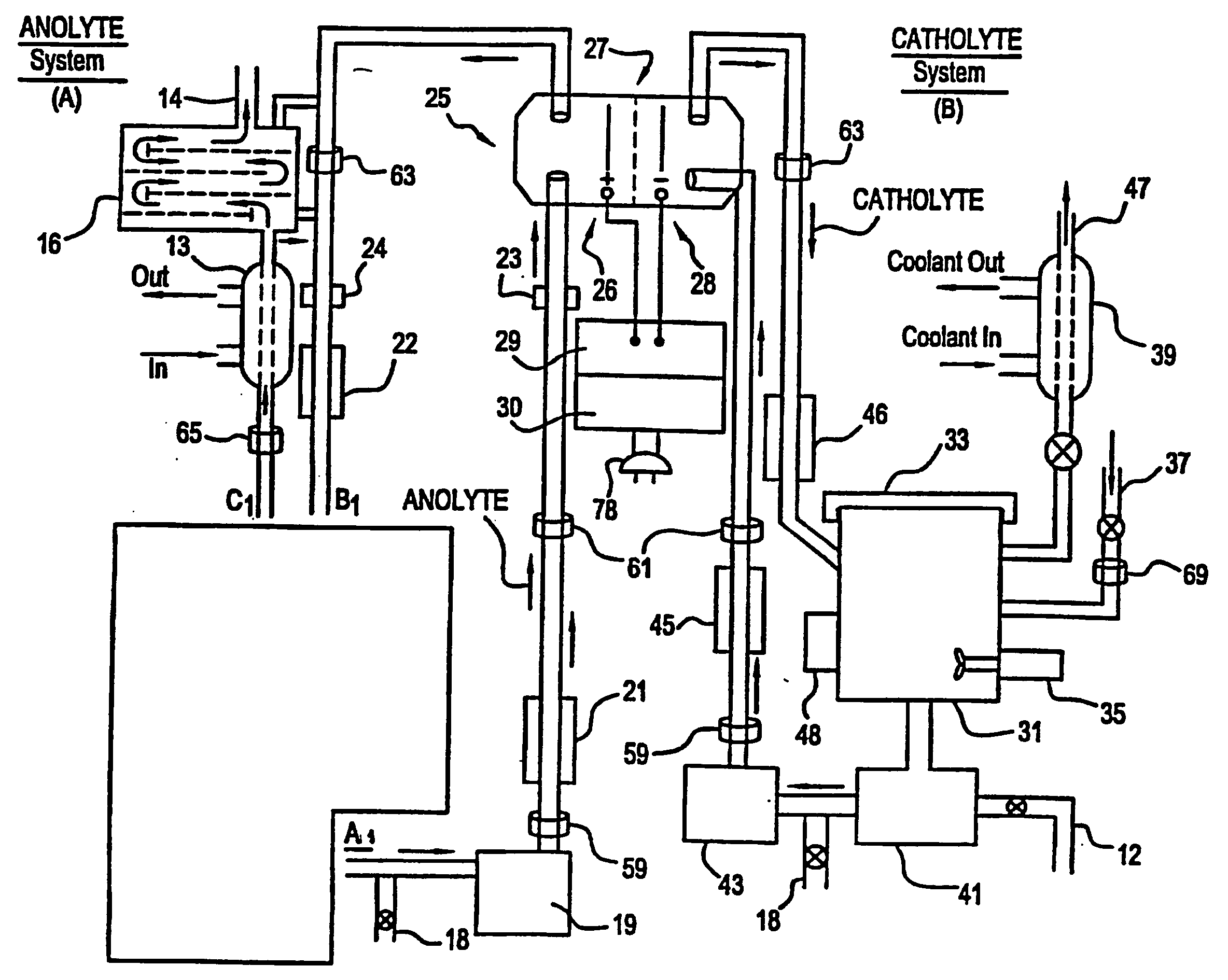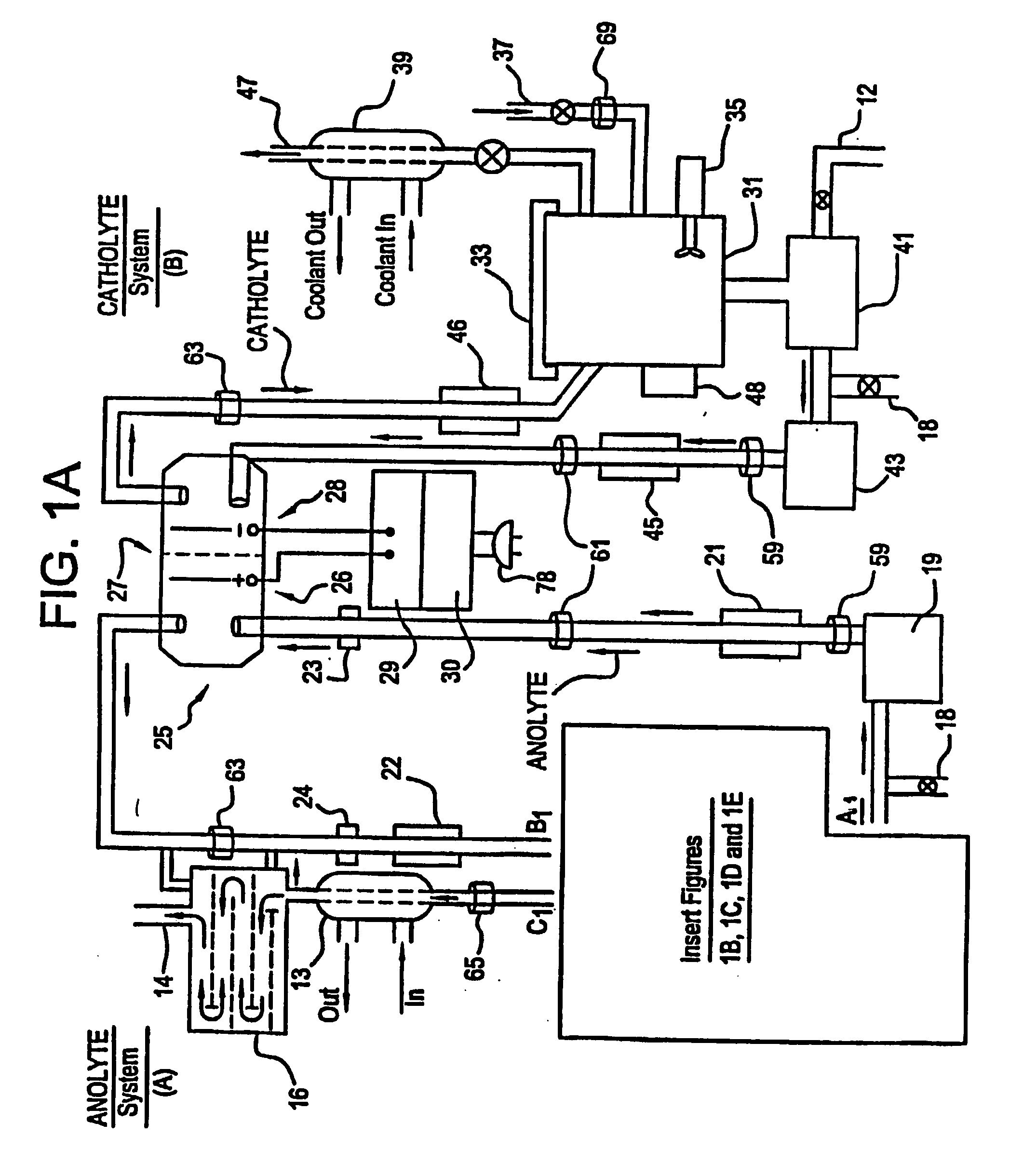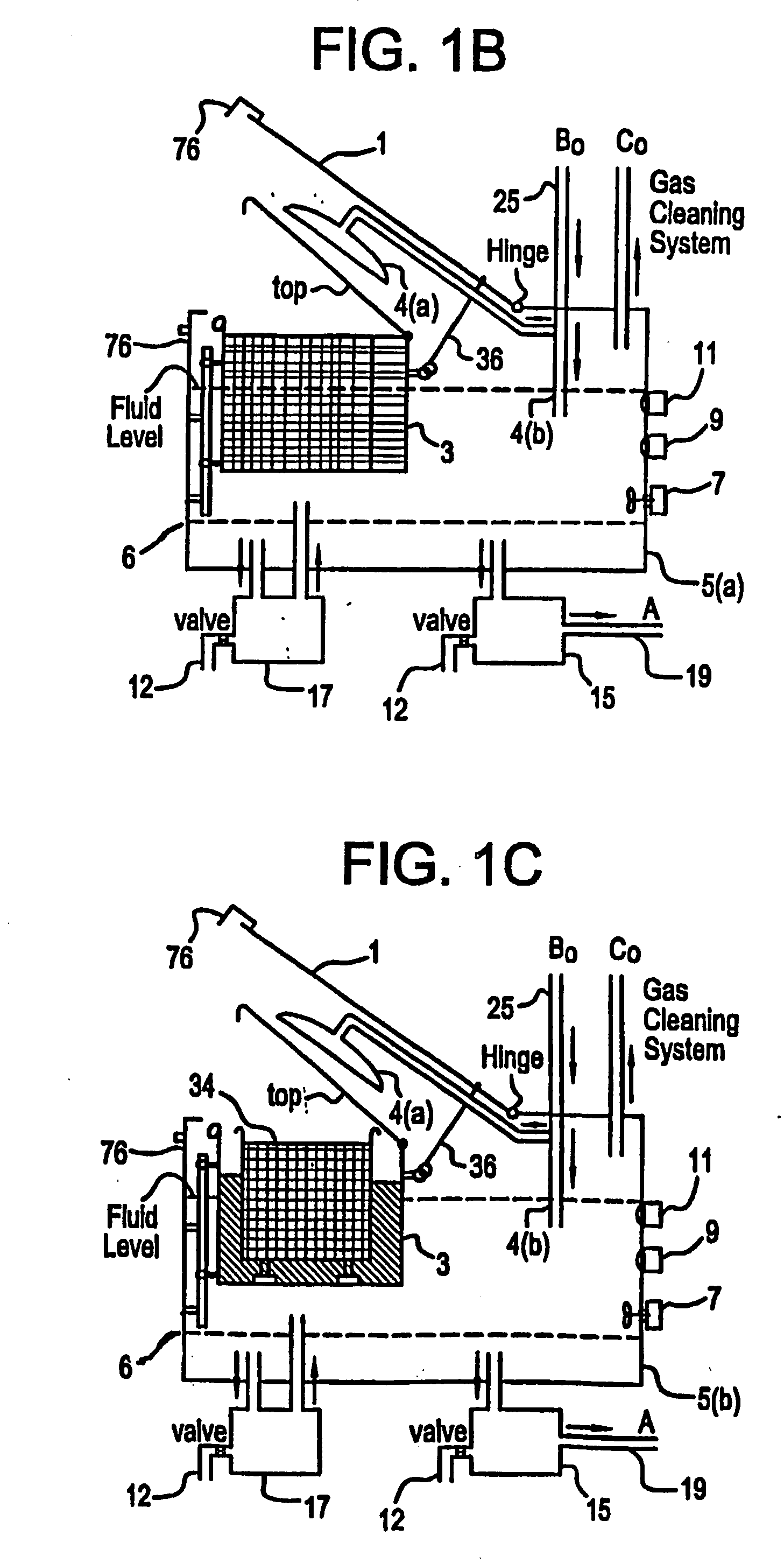Mediated electrochemical oxidation of destruction of sharps
a technology of electrochemical oxidation and sharps, which is applied in the direction of separation processes, applications, manufacturing tools, etc., can solve the problems of hazardous emissions and the tens of millions of dollars in equipment required, and achieve the effect of increasing the efficiency of the meo process
- Summary
- Abstract
- Description
- Claims
- Application Information
AI Technical Summary
Benefits of technology
Problems solved by technology
Method used
Image
Examples
example 1
Destruction of Biological Specimens:
[0119] The MEO apparatus using the MEO process was tested using a number of whole small animals (dead mice). The MEO process was run at less then 100 watts for approximately an hour. The entire physical structure of the mouse was totally converted into a liquid. The liquid was tested using GC / FID analysis and did not show evidence of any hydrocarbons present. The detection limit for this analysis method (GC / FID) is approximately 1 to 10 ppm (parts per million). This result supports the conclusion that the contents of the liquid were sterilized and disinfected. The microorganism tests to determine the existence of microorganism will be completed following accepted protocols to substantiate the conclusion that the MEO process sterilizes and / or disinfects Sharps I and II.
example 2
Efficient and Environmentally Safe Products:
[0120] The MEO process produces metallic ions in solution and the biological waste decomposes into CO2, water, and trace inorganic salts all of which are considered benign for introduction into the environment by regulatory agencies. The cost of using the MEO process in this invention is competitive with both the incineration and landfill methodologies. The MEO process is uniquely suited for destruction of biological waste because water, which constitutes a major portion of this waste (e.g., tissue, bodies fluids, etc.) is either benign or actually a source of secondary oxidizing species, rather than parasitic reactions competing for the mediator oxidizing species. Furthermore, the energy that must be provided in the MEO process to heat the waste stream water component from ambient to the electrolyte operating temperature (i.e., 80° C. maximum temperature increase) is trivial compared to the water enthalpy increase required in autoclave ...
example 3
Benign In-door Operation:
[0121] The system is unique relative to earlier art, since it is built to operate in an indoor environment such as a hospital room or laboratory where it must be compatible with people working in close proximity to the system as well as people being treated for medical conditions. The amount of infectious waste adhering to the sharps is generally very small in weight and volume thus the carbon dioxide emitted from the decomposition is equally small. The system is suitable for indoor use in spaces inhabited by personnel as well as for industrial workspaces similar to an incinerator building.
PUM
| Property | Measurement | Unit |
|---|---|---|
| Temperature | aaaaa | aaaaa |
| Temperature | aaaaa | aaaaa |
| Temperature | aaaaa | aaaaa |
Abstract
Description
Claims
Application Information
 Login to View More
Login to View More - R&D
- Intellectual Property
- Life Sciences
- Materials
- Tech Scout
- Unparalleled Data Quality
- Higher Quality Content
- 60% Fewer Hallucinations
Browse by: Latest US Patents, China's latest patents, Technical Efficacy Thesaurus, Application Domain, Technology Topic, Popular Technical Reports.
© 2025 PatSnap. All rights reserved.Legal|Privacy policy|Modern Slavery Act Transparency Statement|Sitemap|About US| Contact US: help@patsnap.com



